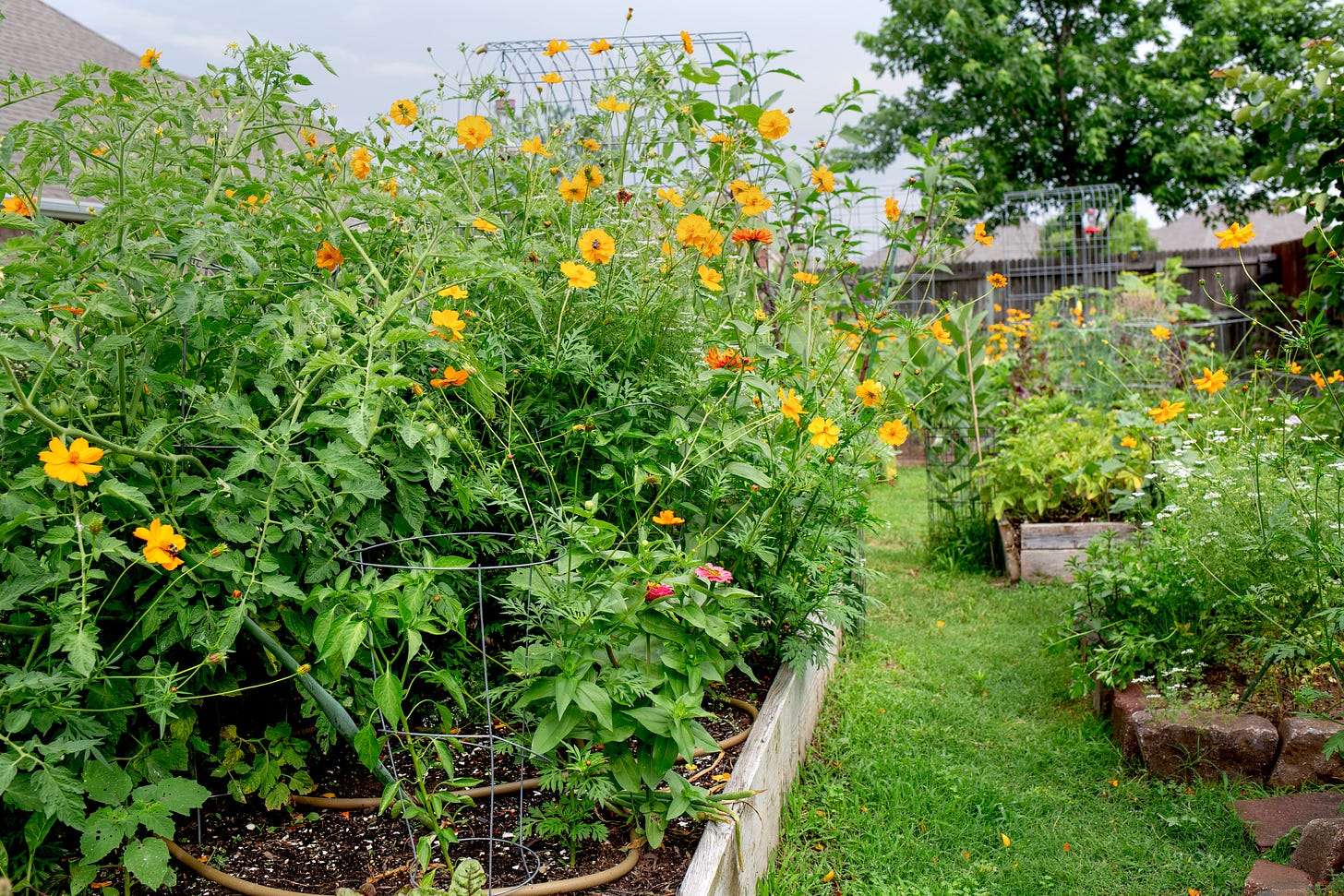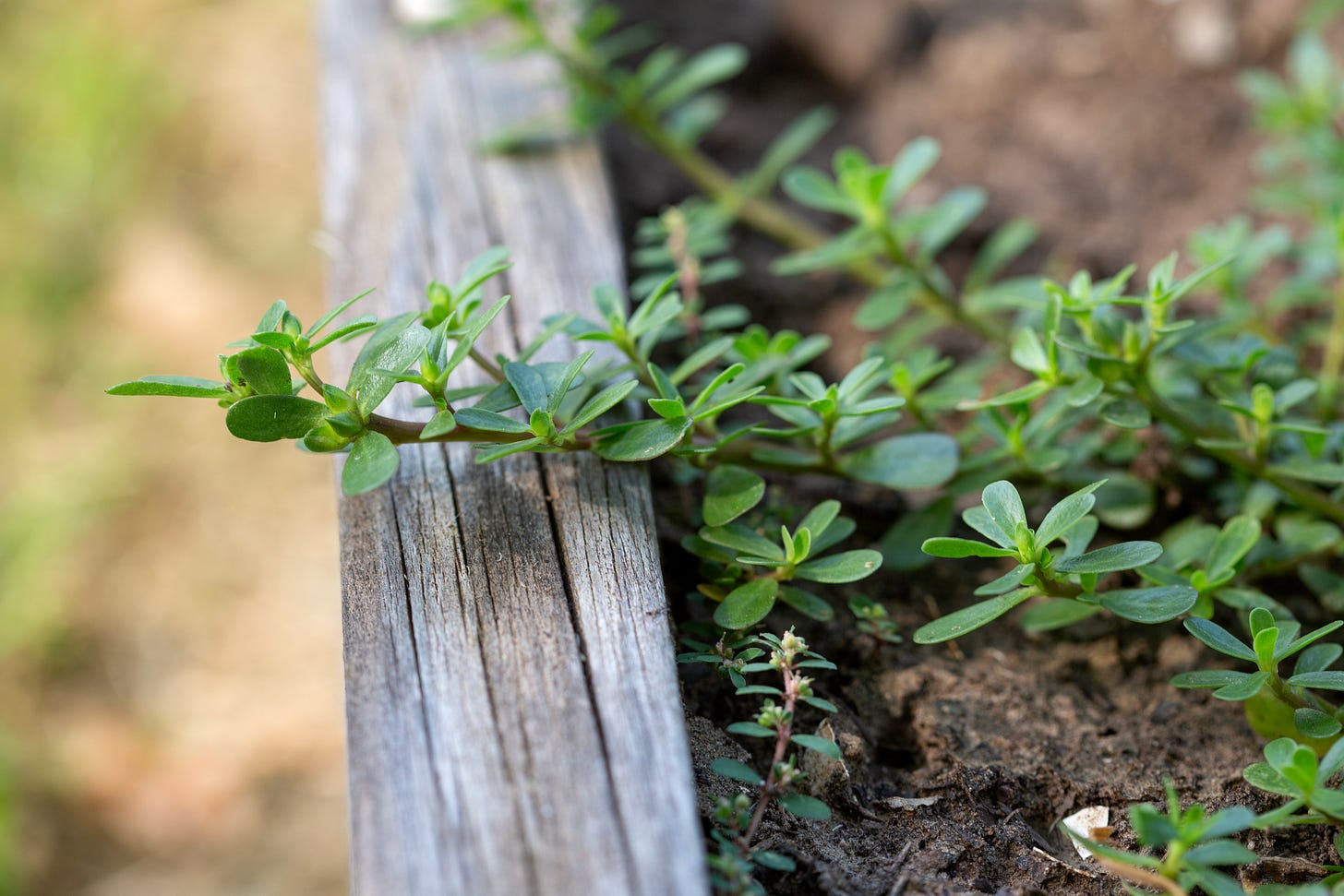It’s Earth Day, and I spent part of the day so far in my garden doing what I’ve come to think of as a kind of ritual - scattering seeds and seeing what comes up. Today it was German chamomile, the 2025 herb of the year, sprinkled on bare patches of soil with no formal plan. I can’t ever have too much chamomile. I harvest and dry it for herbal tea and to add to my bone stock in the fall and winter.
I’ve also been scattering about zinnia seeds I collected from last year’s spent flowers and tossing around seeds from old seed packets. There’s no telling what will come up where. But that’s the fun part.

I also planted a few things with intention - pickling cucumber seeds under the new teepee trellis my husband built, sweet alyssum in the borders of my raised beds, and brown eyed Susan seedlings in any sunny spot I can find.
Early this morning, before the sun had fully risen, I gathered mugwort by moonlight and paired it with sage to craft a cleansing wand for a friend of a friend—someone looking to clear the lingering energy from a home after the end of a relationship. Over the years, I’ve come to see how herbs can hold space for all kinds of transitions.

Lately I’ve been thinking a lot about the concept of chaos gardening—partly because I wrote about it here recently for the CanningCrafts garden blog, and partly because it’s how I garden more and more these days. The philosophy behind it is simple: let go of rigid rows and rules and let the wild back in.
This year, chaos gardening feels especially aligned with Earth Day. In a world unraveling with political madness, economic uncertainty, and a shifting climate, chaos gardening feels like a quiet act of resistance. Tending to what we can, where we are, embracing wildness, and growing something resilient in the face of it all.
What better way to honor the earth than by letting it speak for itself a little more in our spaces? That means resisting the urge to pull every weed, and instead observing what shows up. What plants volunteer themselves? What are the wild herbs and so-called weeds trying to tell you about your soil and the balance in your garden?

Chaos gardening is also an invitation to release perfectionism, not just in the garden, but maybe in ourselves too. The stray sunflower that comes up where you didn’t plant it. The patch of wild violets in the corner of the yard. The creeping purslane that slips into the edge of your path. The wood sorrel that comes up freely and spills out of the corners of garden beds. These are reminders that Mother Nature doesn’t always follow our plans. Sometimes the most ecological thing we can do is to stop micromanaging Her and start partnering with Her instead.

I’m also deep into helping my boss, Joe Lamp’l, organize this year’s Ecological Gardening Summit, and I’m so excited about who we’ve invited to speak. We’ve got the UK’s Dave Goulson talking about gardening for insects, Nancy Lawson on learning to coexist with our wildlife neighbors through creative planting strategies, and Benjamin Vogt with a powerful call to “unlawn” our yards.
This summit is another way we’re helping gardeners shift their mindset from control to collaboration. From tidy perfection to ecological participation. From domination to stewardship.

So today, I’m celebrating the earth by getting dirty and planting seeds I might forget about until they surprise me. By weaving intention into the plants I grow. And by leaning into the beautiful mess of a garden that evolves with the land, not in spite of it.
Happy Earth Day, friends. May your garden be wild and welcoming.





